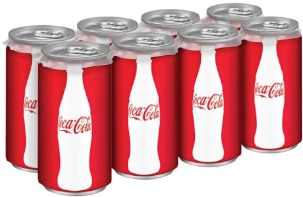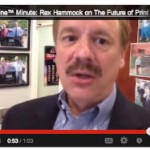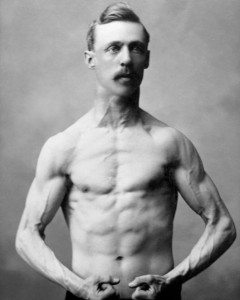



After a radical overhaul, the corporate website of Coca-Cola (Coca-ColaCompany.com) now demonstrates how story-focused customer media and engaging content isn’t just for product marketers anymore.
 Hammock’s current Idea Email focuses on the approach the Coca-Cola Company has taken to radically pivot away from what most companies do with their corporate websites. Traditionally considered little more than a brochure website and repository for press releases and administrative content, Coke has transformed the site into an ever-changing and engaging “publishing model” site called Journey.
Hammock’s current Idea Email focuses on the approach the Coca-Cola Company has taken to radically pivot away from what most companies do with their corporate websites. Traditionally considered little more than a brochure website and repository for press releases and administrative content, Coke has transformed the site into an ever-changing and engaging “publishing model” site called Journey.
Here are some of the lessons learned from the first six months of the new approach, according to Coca-Cola executives, including Ashley Callahan, Coca-Cola manager of digital and social media communications, who made a presentation about Journey at last week’s Custom Content Council Conference. We also added some observations from our analysis of the site.
In the current issue of The Idea Email, we explain why we’re inspired by how the retailer Williams-Sonoma has made the creation and use of customer media and content a part of their mission statement.
Here are three of our favorite ways they display their commitment to “helping customers become great cooks” in a way that adds value to the cookware they sell. (We could have added lots more.)
 The Sous-Chef-Series: Williams-Sonoma has partnered with The Tasting Table for a free weekly email and website series featuring the stories of up-and-coming chefs from around the U.S. Why we like it: Great stories and recipes are coupled with Williams-Sonoma cookware that’s related to the dish being shared. A great example of “content-enabled commerce.”
The Sous-Chef-Series: Williams-Sonoma has partnered with The Tasting Table for a free weekly email and website series featuring the stories of up-and-coming chefs from around the U.S. Why we like it: Great stories and recipes are coupled with Williams-Sonoma cookware that’s related to the dish being shared. A great example of “content-enabled commerce.”
 While Rex Hammock was in Oxford, Mississipi earlier this week (see previous post), Mr. Magazine Samir Husni interviewed Rex and posted a couple of “Mr. Magazine Minutes”–Rex’s answers to a couple of questions.
While Rex Hammock was in Oxford, Mississipi earlier this week (see previous post), Mr. Magazine Samir Husni interviewed Rex and posted a couple of “Mr. Magazine Minutes”–Rex’s answers to a couple of questions.
On his blog, Professor Husni wrote:
“You can call Rex Hammock, the founder and chief executive officer of the Nashville-based Hammock Inc., any name you want, except that of a Luddite. Rex bought his first Apple Mac in 1984, and has been tempted by the Apple ever since. On Twitter he is simply known as @R. He is all over the web, the digital sphere and more.
So when Rex came to speak to my magazine students at the Meek School of Journalism and New Media yesterday, I seized the opportunity to ask him two questions, after he completed his presentation to the students.
Here are Rex’s two Mr. Magazine minute videos. (If you are on the front of the Hammock Blog, click through to see the videos)
I recently ran across an insightful essay named, “The best interface is no interface,” written last August on the blog of the San Francisco-based product design firm, Cooper.
I recommend reading the entire essay, but here is a key quote:
It’s time for us to move beyond screen-based thinking. Because when we think in screens, we design based upon a model that is inherently unnatural, inhumane, and has diminishing returns. It requires a great deal of talent, money and time to make these systems somewhat usable, and after all that effort, the software can sadly, only truly improve with a major overhaul. There is a better path: No UI (user-interface). A design methodology that aims to produce a radically simple technological future without digital interfaces.
At Hammock, we share a similar a point-of-view. We believe that one of the signs of great customer media and content is how well it removes barriers between customers and the organizations with which they choose to have relationships. Taken to its logical conclusion, the goal is to remove everything between the two, or, at least, to make it appear that transparent.

Everyone knows the funny-yet-true Murphy’s Law: “Anything that can go wrong, will go wrong.”
But have you ever heard of “Wiio’s Laws”? They are from Finnish author and communications professor Osmo Wiio.
In the late 1970s, Wiio was elected to his country’s parliament where he served for four years. Not surprisingly, it was during this stint as a politician that he formulated his theories on why “communication usually fails except by accident.”
[Cross-posted on Rex Hammock’s RexBlog.com]
A few seconds after I saw the Super Bowl power outage “Oreo tweet” last night, I was so awed, I responded with the tweet below (Note: the time-stamp is GMT.) Scroll down, and you’ll find my Monday morning thoughts about what made it such a breakthrough use of social media.
What Apple 1984 is to TV ads, this is to use of Twitter @oreo: Power out? No problem. twitter.com/Oreo/status/29…”
— Rex Hammock (@R) February 4, 2013
Monday morning, 5:30 a.m.:
I’m not a fan of long explanations of the self-evident, but I know there will be much misinterpretation of why the Oreo tweet was brilliant, so I wanted to weigh in before the media sites that write headlines for Google (Huffington Post) start their SEO avalanche of headlines like “10 lessons you can learn from the Oreo tweet.”
Here are my two takeaways of why the Oreo tweet is the most outstanding use of use of Twitter as a unique marketing medium and distribution channel. (Note: There are countless ways to use Twitter, and far more important ways than mere marketing.)

“When we’re marketers, we think our job is to flex our brand muscles and tell the world how great our company and product are.”
[@Getty Images / Thinkstock]
Except when we’re at work, those of us who have marketing jobs aren’t marketers, we’re customers.
When we’re not at our marketing jobs, we experience the world of commerce through the eyes of a customer. We make purchasing decisions and interact with companies — all while in the role of buyer, not seller; as a user, not a maker or supplier.
We all are experts at being customers, perhaps even more than we are experts at being marketers.
But too often, when we punch in our time-cards at the marketing factory, we leave that expertise at the door.
For example, when we are customers, we buy products from companies that tell us how great we are — and how their product is all about helping us be or do what we want to be or do.
But when we’re marketers, we think our job is to flex our brand muscles and tell the world how great our company and product are.
When we’re marketers, we think our job is to target customers. But as customers, we’re tired of being target practice.
The secret to successful marketing is to stop being a marketer.
Stop cranking out all that hype you can’t stand to receive when you’re a customer.
Stop telling customers how great you are — and start helping them be great at something they want to be.
You know all this — at least you do when you’re not at work.
Do you recognize the guy with the cigar in the photo accompanying this post? He was a comic character, Raymond J. Johnson Jr., created by comedian Bill Sagula in the 1970s, who was forever introducing himself to anyone he’d meet with a string of names, like: “You can call me Ray. And you can call me Jay. And you call me Ray Jay. Etc.”
At Hammock, we are beginning to feel like Ray (or Jay or RJ, or RJJ) …
When Hammock Inc. started more than 20 years ago, the services we provided (and still provide) put us into a segment of the marketing and media world called “custom publishing.” We considered our service to be assisting our clients in building strong relationships with customers, something we thought “loyalty marketing” was a good term to describe.